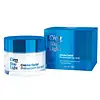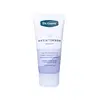What's inside
What's inside
 Key Ingredients
Key Ingredients

 Benefits
Benefits

 Concerns
Concerns

No concerns
 Ingredients Side-by-side
Ingredients Side-by-side

Water
Skin ConditioningBenzoic Acid
MaskingButyrospermum Parkii Butter
Skin ConditioningC12-16 Alcohols
EmollientCitric Acid
BufferingCoco-Caprylate/Caprate
EmollientFructose
HumectantGlycerin
HumectantHydrogenated Lecithin
EmulsifyingJuglans Regia Seed Extract
Skin ConditioningOryza Sativa Starch
AbsorbentPalmitic Acid
EmollientParfum
MaskingPhenethyl Alcohol
MaskingPotassium Sorbate
PreservativePrunus Amygdalus Dulcis Oil
Skin ConditioningSodium Hydroxide
BufferingSodium Metabisulfite
AntioxidantSorbic Acid
PreservativeTocopheryl Acetate
AntioxidantXanthan Gum
EmulsifyingWater, Benzoic Acid, Butyrospermum Parkii Butter, C12-16 Alcohols, Citric Acid, Coco-Caprylate/Caprate, Fructose, Glycerin, Hydrogenated Lecithin, Juglans Regia Seed Extract, Oryza Sativa Starch, Palmitic Acid, Parfum, Phenethyl Alcohol, Potassium Sorbate, Prunus Amygdalus Dulcis Oil, Sodium Hydroxide, Sodium Metabisulfite, Sorbic Acid, Tocopheryl Acetate, Xanthan Gum
Water
Skin ConditioningBetaine
HumectantOctyldodecyl Myristate
EmollientGlycerin
HumectantSqualane
EmollientDicaprylyl Carbonate
EmollientAvena Sativa Kernel Oil
Skin ConditioningHydroxyethyl Acrylate/Sodium Acryloyldimethyl Taurate Copolymer
Emulsion StabilisingHydrogenated Coco-Glycerides
EmollientPanthenol
Skin ConditioningTocopheryl Acetate
AntioxidantTocopherol
AntioxidantEthylhexylglycerin
Skin ConditioningPolysorbate 60
EmulsifyingSorbitan Isostearate
EmulsifyingCitric Acid
BufferingPhenoxyethanol
PreservativeWater, Betaine, Octyldodecyl Myristate, Glycerin, Squalane, Dicaprylyl Carbonate, Avena Sativa Kernel Oil, Hydroxyethyl Acrylate/Sodium Acryloyldimethyl Taurate Copolymer, Hydrogenated Coco-Glycerides, Panthenol, Tocopheryl Acetate, Tocopherol, Ethylhexylglycerin, Polysorbate 60, Sorbitan Isostearate, Citric Acid, Phenoxyethanol
 Reviews
Reviews

Ingredients Explained
These ingredients are found in both products.
Ingredients higher up in an ingredient list are typically present in a larger amount.
Citric Acid is an alpha hydroxy acid (AHA) naturally found in citrus fruits like oranges, lemons, and limes.
Like other AHAs, citric acid can exfoliate skin by breaking down the bonds that hold dead skin cells together. This helps reveal smoother and brighter skin underneath.
However, this exfoliating effect only happens at high concentrations (20%) which can be hard to find in cosmetic products.
Due to this, citric acid is usually included in small amounts as a pH adjuster. This helps keep products slightly more acidic and compatible with skin's natural pH.
In skincare formulas, citric acid can:
While it can provide some skin benefits, research shows lactic acid and glycolic acid are generally more effective and less irritating exfoliants.
Most citric acid used in skincare today is made by fermenting sugars (usually from molasses). This synthetic version is identical to the natural citrus form but easier to stabilize and use in formulations.
Read more about some other popular AHA's here:
Learn more about Citric AcidGlycerin is already naturally found in your skin. It helps moisturize and protect your skin.
A study from 2016 found glycerin to be more effective as a humectant than AHAs and hyaluronic acid.
As a humectant, it helps the skin stay hydrated by pulling moisture to your skin. The low molecular weight of glycerin allows it to pull moisture into the deeper layers of your skin.
Hydrated skin improves your skin barrier; Your skin barrier helps protect against irritants and bacteria.
Glycerin has also been found to have antimicrobial and antiviral properties. Due to these properties, glycerin is often used in wound and burn treatments.
In cosmetics, glycerin is usually derived from plants such as soybean or palm. However, it can also be sourced from animals, such as tallow or animal fat.
This ingredient is organic, colorless, odorless, and non-toxic.
Glycerin is the name for this ingredient in American English. British English uses Glycerol/Glycerine.
Learn more about GlycerinTocopheryl Acetate is AKA Vitamin E. It is an antioxidant and protects your skin from free radicals. Free radicals damage the skin by breaking down collagen.
One study found using Tocopheryl Acetate with Vitamin C decreased the number of sunburned cells.
Tocopheryl Acetate is commonly found in both skincare and dietary supplements.
Learn more about Tocopheryl AcetateWater. It's the most common cosmetic ingredient of all. You'll usually see it at the top of ingredient lists, meaning that it makes up the largest part of the product.
So why is it so popular? Water most often acts as a solvent - this means that it helps dissolve other ingredients into the formulation.
You'll also recognize water as that liquid we all need to stay alive. If you see this, drink a glass of water. Stay hydrated!
Learn more about Water